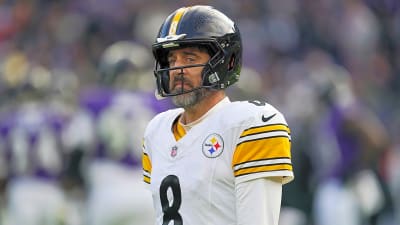
The Anaheim Ducks defensive evolution is navigating a pivotal phase in the rebuild. A defensive unit that blends promising young talent and seasoned veterans. The recent injury to Cam Fowler and the departure of Jamie Drysdale. Have thrown players like Pavel Mintyukov and Brian Dumoulin into more prominent roles. As of late November 2024, the question remains: Is this defensive group showing signs of progress, or are growing pains still defining their play?
The Defensive Core: A Blend of Youth and Experience
The Anaheim Ducks defensive evolution as far as thier lineup this season features veterans like Radko Gudas and Brian Dumoulin anchoring the back end. While young defencemen such as Olen Zellweger, Pavel Mintyukov, and Jackson LaCombe have stepped into larger roles. This mix of experience and youth is essential for a rebuilding team, but it also exposes the group to inconsistencies.
Defensive Stats at a Glance
| Defenceman | Games Played | Points | Blocked Shots | Hits | Avg TOI (min) |
| Radko Gudas | 21 | 3 | 54 | 69 | 18 |
| Brian Dumoulin | 21 | 6 | 37 | 22 | 19 |
| Olen Zellweger | 20 | 10 | 20 | 14 | 19 |
| Pavel Mintyukov | 20 | 6 | 35 | 16 | 20 |
| Jackson LaCombe | 15 | 4 | 32 | 10 | 18 |
Player Analysis
Pavel Mintyukov: Emerging Two-Way Defenceman
Pavel Mintyukov has made a significant impact in his rookie season. In 20 games, he has recorded 6 points (3 goal, 3 assists) and is averaging 20 minutes of ice time per game. His ability to contribute offensively while maintaining defensive responsibilities has been a valuable asset for the Ducks. Mintyukov’s poise with the puck and decision-making skills have accelerated his adjustment to the NHL level.
Brian Dumoulin: Veteran Stability
Brian Dumoulin brings a wealth of experience to Anaheim’s blue line. In 21 games, he has contributed 6 assists, 37 blocked shots, and 22 hits, while averaging 19 minutes of ice time per game. Dumoulin’s defensive acumen and leadership are crucial, especially with the absence of Cam Fowler. His steady presence helps mentor the younger defencemen and provides reliability in high-pressure situations.
Olen Zellweger: Offensive Spark from the Blue Line
Olen Zellweger has been a standout for Anaheim, stepping up significantly in Fowler’s absence. Through 20 games, Zellweger has tallied 10 points (4 goals, 6 assists) and is averaging 19 minutes of ice time per game. Known for his offensive instincts and elite skating ability, Zellweger has quickly become one of the Ducks’ most exciting players.
Zellweger’s transition game is a key strength, allowing the Ducks to move the puck out of their zone efficiently and generate scoring chances. His Offensive Zone Start Percentage (oZS%) of 57.9% underscores his role as a driving force in offensive situations. However, like many young defencemen, his defensive positioning and physical play need refinement. These areas will improve as he gains experience at the NHL level.
Radko Gudas: The Defensive Enforcer
Radko Gudas has brought much-needed physicality and defensive reliability to Anaheim’s blue line. In 21 games, Gudas leads the team in both hits (69) and blocked shots (54), while averaging 18 minutes of ice time per game. His presence has provided stability for the Ducks, especially in tight games where his toughness and experience make a difference.
Jackson LaCombe: A Quietly Reliable Contributor
Jackson LaCombe has stepped into a larger role this season and has shown he can handle the pressure. In 15 games, he has recorded 4 points, 32 blocked shots, and 10 hits, while averaging 18 minutes of ice time. While LaCombe’s contributions are not as flashy as Zellweger’s, his ability to play a steady, reliable game has been valuable for the Ducks.
Progress or Growing Pains
Strengths of the Ducks’ Defence
- Transition Play: Zellweger’s ability to drive the puck up the ice and contribute offensively has elevated the Ducks’ transition game.
- Physicality: Gudas’s physical presence sets the tone defensively, making Anaheim tougher to play against in their own zone.
- Development of Young Players: Mintyukov, Zellweger, and LaCombe are gaining critical experience, which will benefit the Ducks in the long term.
Challenges and Weaknesses
- Defensive Zone Consistency: Younger players are still adapting to the speed and physicality of the NHL, leading to occasional lapses in defensive coverage.
- Special Teams Struggles: Anaheim’s penalty kill remains inconsistent, allowing opponents to exploit defensive breakdowns.
- The Absence of Fowler: Without their veteran leader, the Ducks lack a stabilizing force on the blue line, putting more pressure on the younger defencemen to step up.
Advanced Metrics: Measuring Performance
The Ducks’ defensive statistics reveal both progress and areas for improvement:
- Shots Against Per Game: Anaheim allows an average of 34 shots per game, ranking among the bottom third of the league. While players like Gudas help limit high-danger chances, the team struggles to control play in their own zone.
- Goals Against Per Game: The Ducks are conceding 2.95 goals per game, highlighting the need for tighter defensive coverage and improved goaltending support.
- Offensive Zone Start Percentage (oZS%): Zellweger leads the group with an oZS% of 57.9%, reflecting his offensive role, while Gudas’s 34.4% reflects his focus on defensive responsibilities. LaCombe balanced role, with an oZS% near 50.6%, highlights his ability to contribute at both ends of the ice.
Spotlight on Mintyukov’s and Zellweger’s Growth
Pavel Mintyukov: Mintyukov’s ability to handle NHL-level responsibilities early in his career is promising. His puck-handling and decision-making are advanced for a rookie, enabling him to contribute both offensively and defensively. As he becomes more comfortable with the pace and physicality of the NHL, he could emerge as a reliable two-way defenceman.
Olen Zellweger: Zellweger continues to shine as one of the NHL’s most exciting young offensive defencemen. His skating and transition play are already elite, and his confidence in the offensive zone is growing with each game. While his defensive game remains a work in progress. The experience he’s gaining this season is invaluable for his development into a top-tier two-way defender.
What’s Next for Anaheim’s Defence
For the Ducks to solidify their defensive evolution, the following areas must be prioritized:
- Enhancing Defensive Consistency: Young defencemen like Mintyukov and Zellweger need continued support to refine their positioning and decision-making in high-pressure situations.
- Special Teams Improvements: Strengthening the penalty kill will reduce the strain on goaltending and limit high-danger scoring chances.
- Leveraging Veteran Leadership: Players like Gudas and Dumoulin need to continue mentoring the younger players while providing stability during Fowler’s absence.
- Maximizing Offensive Potential: With Zellweger and Mintyukov capable of driving offence from the back end. the Ducks must find ways to better utilize their skills, particularly on the power play.
Conclusion
The AnThe Anaheim Ducks’ defensive evolution remains a mix of progress and growing pains. Players like Pavel Mintyukov and Olen Zellweger represent the future of the blue line, showcasing immense potential despite their inexperience. Meanwhile, veterans like Radko Gudas and Brian Dumoulin provide the physicality and leadership necessary to guide the younger core.
As the Ducks continue through the 2024–25 season. Their ability to balance development with consistent performance will determine whether their defensive evolution turns into a long-term strength. For now, the blend of youth and experience offers a glimpse of a promising future for Anaheim’s blue line.
More must-reads:
- Buffalo Sabres' GM change isn't about rebuilding
- Quinn Hughes makes immediate impact, scores goal in debut with Wild
- The 'Last 10-TD season by NFL team' quiz
Breaking News
Trending News
Customize Your Newsletter
 +
+
Get the latest news and rumors, customized to your favorite sports and teams. Emailed daily. Always free!








